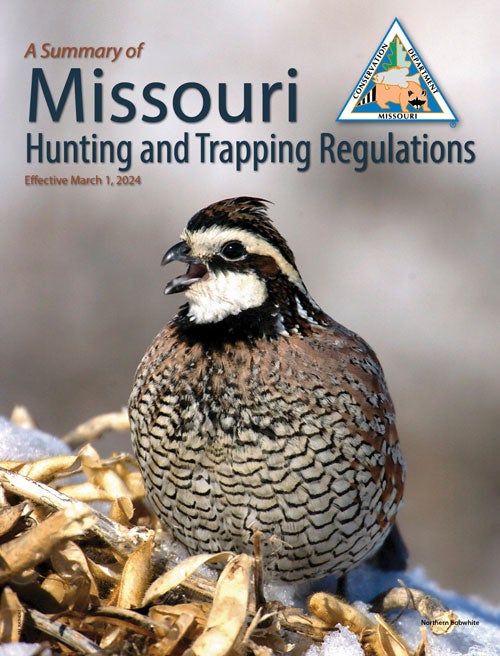About Quail
Known simply as "quail" or "bobwhite," the northern bobwhite can be found in every county in Missouri. Bobwhites are so named for the male’s cheery call issued from fenceposts or other elevated perches in late spring and through summer.
Food and Habitat Needs
Quail need habitat consisting of grassy/weedy areas for nesting, roosting, and raising broods; well-distributed patches of brushy cover for loafing and escaping predators; abundant food resources; and enough interspersed patches of bare ground to facilitate movement and foraging.
Quail chicks require lots of insects, spiders and other invertebrates to support their rapid growth. Few bugs equal few bobwhites.
Nesting and Survival Rates
Bobwhites are ground-nesting birds and lay clutches of 10–14 eggs in a nest at the base of a grass clump. Chicks hatch fully feathered and mobile. They begin hunting insects immediately.
June 15th is the date often referred to as being the peak of the quail hatch in Missouri. However, new research is forcing biologists to re-examine this belief. A study in southwest Missouri has documented nearly half of the nesting activity occurring after July 1!
In mid-autumn, bobwhites assemble into coveys of 10–15 birds and generally eat seeds. Annual mortality is high, and most bobwhite young live less than a year. The quail’s high reproductive capacity counter balances this high mortality rate, and bobwhites are capable of rapid population increases when habitat conditions are favorable.
Getting Started
Finding a Place to Hunt Quail
Bobwhites can be found on many conservation areas across the state. While many of these areas provide quail hunting opportunities, several are designated as Quail Restoration Landscapes, where quail habitat is the focus of management. For more detailed information about an area, visit Places to Go.
Hunting Equipment
- A lightweight, fast swinging shotgun works well.
- Most hunters use size #7½ or #8 shot and an open choke.
Bird Dogs
A good bird dog, or two, aids tremendously in finding bobwhites and adds to the enjoyment of the hunt. In fact, many quail hunters enjoy the dog work even more than the challenging shooting.
Although the use of dogs increases the likelihood of encountering quail, a recent study in Kentucky found that even well-trained dogs may find only 30% of the wild quail coveys present.
When possible, work as much of the cover with the wind in your face as this will reduce the chances of dogs accidentally "bumping" birds. Don’t be in a hurry, give the dogs ample time to cover the ground.
Tips and Tricks
- Increase your odds of finding quail by focusing on suitable brushy cover. Most coveys will be found within 40 yards of brushy cover in the fall.
- Slow down and be as quiet as possible while letting your dog’s work the cover thoroughly.
- If the dogs get "birdy" but don’t produce any birds, work the dogs back over an expanded area, as the birds have likely moved.
- Don't overlook croplands or large grassland-dominated landscapes with little mature tree cover. If the cover has an abundance of forbs (broad-leaved plants) with some grasses and shrubby cover, quail are likely using it.
-
To gauge if cover is too thick for quail, imagine tossing a softball (underhand like a pitcher) into the cover. If the softball "sticks," it is too thick and likely will hold few quail. If the ball bounces and rolls, even only a few feet, the cover is much more suitable for quail.
Got Habitat?
Quail must have herbaceous cover consisting of some grass and lots of weeds to be successful. Ragweed, pigweed, lambsquarters, barnyardgrass, and smartweeds are a few of the often-maligned plants favored by quail.
For technical assistance in providing brood habitat and other quail needs, contact your local private land conservationist.























